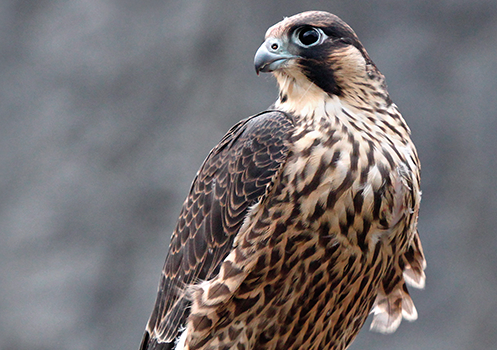Hank Chalmers of Eagle Encounters bird of prey rehabilitation centre is devoted to keeping these majestic birds flying free. By Marion Whitehead
Why did you choose to work with raptors?
I followed my heart – I learnt falconry from my dad when I was young and my heart belongs to these animals. Working with them is a way of doing what I love.
Does the relationship between raptors and humans have a long history?
It goes back thousands of years to early Egyptian times – mummified birds have been found with their owners, who took them along into the afterlife!
In medieval times, falconry was the sport of kings, and non-royals – with a few exceptions – were not allowed to practise it. (For example, the cook could fly a goshawk to catch rabbits and pheasants for the king’s table.)
What’s in it for the bird?
It’s very beneficial for the bird. In the wild, their mortality rate is 95% [only 5% make it to adulthood] and they use a lot of energy to hunt, often unsuccess-fully. Falconers take the raptor out and use a dog to flush prey so there is an opportunity for a kill on every flight.
Isn’t it stressful for the birds at Eagle Encounters to perform for visitors?
No, these are human-imprinted birds, brought to us by CapeNature, that can’t be returned to the wild. They’re flying for their meals and for exercise; we just make more of a performance out of it. If a bird is stressed or it isn’t hungry, it won’t fly. All training is done using positive reinforcement and, obviously, you have to know what you’re doing.
What is the most common kind of rescue you are asked to help with?
Car accidents: 80% of the birds coming in here (mostly spotted eagle owls and barn owls) have been hit by vehicles. When they see a rat, they just swoop, regardless of traffic.
How do you go about rehabilitating these birds?
Every case depends on the injury and you’ve got to decide with your head, not your heart. It’s always a difficult decision; we have put together criteria with CapeNature, the SPCA and the Percy Fitzpatrick Institute of African Ornithology to assist us.
Joint injuries are always hopeless and you have to euthanise the bird. Feathers I can fix; and mid-bone breaks can be strapped for the three weeks they take to heal, then we build up the bird until it can fly again.
Rehabilitating one bird can take anything from five to 800 man-hours, but it’s very rewarding work. I love figuring out the birds’ personalities.
Where does your funding come from?
We’re funded by ecotourism and, to a lesser extent, educational programmes for school groups. We do not get any government subsidy.
What are the biggest threats to raptors today?
The main killer for these birds is habitat loss. As we humans occupy more space, we take away their food sources. Other dangers are collisions with vehicles, fences (they get caught in barbed wire), secondary poisoning (rather use rat traps) and kids with air rifles.
What should people do if they find an injured bird?
Throw a towel or jacket over it and put it in a dark cardboard box to keep it calm. Then bring it to us or your nearest vet or animal-welfare group.
‘Raptor’ is the term for those birds of prey that use keen eyesight, strong talons and sharp beaks to hunt their dinner. This group includes falcons, eagles, hawks and owls.
Eagle Encounters, at Spier Estate on the R310 outside Stellenbosch, holds daily falconry flying displays and interactions with raptors. Co-founder Hank Chalmers also offers mentorship for anyone interested in taking up the ancient art of falconry.
021 858 1826, eagles@telkomsa.net
www.eagle-encounters.co.za
Photography Gallo/Gettyimages
(This article was first published in the spring 2014 issue of AA traveller magazine)




